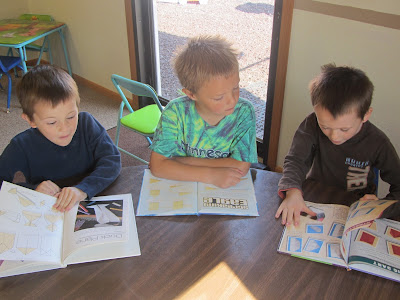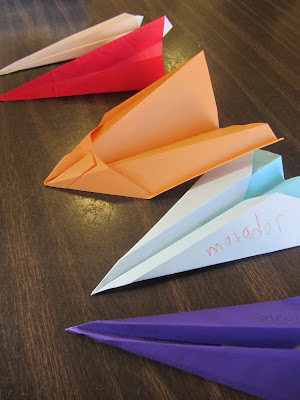For our final homeschool co-op book club meeting of the year, the kids and I flew all the way to France and back, through the pages of Alice Provensen's award-winning classic, The Glorious Flight.
This simple tale recounts the historic achievements of Frenchman and aviator Louis Bleriot who made the first-ever flight across the English Channel in 1909.
I unveiled a map of Europe and pointed out the following key places that are mentioned in the story: France, England, the English Channel, the white cliffs of Dover.
With that foundational knowledge, the kids were able to more thoroughly understand and appreciate the story.
After we read the book, I showed them some real video footage of the historic flight.
We, then, discussed all the many unsuccessful airplane designs Bleriot endured before he finally engineered the Bleriot XI, the plane which made it safely across the channel. We talked of character qualities like determination, perseverance, and courage.
Next came a humorous look at the airplane failures of early aeronautics.
Based on the video, we formulated some simple theories about what makes an airplane fly safely and smoothly. We, then, attempted to test our theories by making some paper airplane models.
With the help of a few DIY paper airplane books and some origami paper, we each made a paper airplane.
Because each person had his/her own thoughts on what would make a good airplane, all the airplanes looked unique.
I encouraged each "aviator" to name his/her airplane just like Louis Bleriot did and helped write these monikers on the wings of each plane.
Next came a flight test. Or two. Or twenty.
Since Bleriot used Roman numerals to name his airplane attempts, I made up some simple Roman numeral cards to teach the numbers 1 through 10.
I reshuffled the cards and we played again. Only this time, I passed out the arabic number cards and held up the Roman numeral cards.
For more book-club or homeschooling ideas, be sure to follow me on Pinterest.










That looks like such a great unit! I have always sort of envied unit-study folks...to me unit studies are so cool to watch other people do but so daunting to do myself. It seems like you (the teacher) have to know so much about a subject before you teach it in order to initiate those learning moments and conversations through the lesson. Is this true? The thing is, I am not that smart! I find I am usually learning right alongside my children as they learn new subjects. And it seems like I wouldn't be able to do those unit studies justice. But maybe my worries are all unfounded and ignorant.
ReplyDeleteDo you find unit studies a lot of work to prepare for? For example- how much prep time did you do to lay out a plan to do roman numerals, watch those videos, discuss what you discussed, etc? Did you read up on anything to learn yourself BEFORE presenting to your kids?
Rebecca @ www.zeahrenaissance.blogspot.com
Some unit studies require more effort on my part than others. But to be honest, most of these mini units done for our book club take about an hour. I read the book before hand, make a short mental list of some of the key concepts from the book, and then do a google search for ideas dealing with those concepts.
DeleteA couple things to remember about unit studies...
1. You don't have to incorporate every subject into a unit study.
2. You don't have to exclusively do unit studies, but can sprinkle little mini units into any curriculum throughout the year.
3. There are several curriculums that have pre-fabbed units already put together for you.
4. You do not have to know a ton about the topic before hand. I knew nothing about Louis Bleriot before reading the book. Just like all other types of methods, you learn right alongside your children as you go.
I agree with Jamie! It doesn't really take that long but SO MUCH MORE ENGAGING for the kids and so much fun to teach! Great post and I love your mini-checklist in answer to Rebecca, Jamie. =D
ReplyDelete